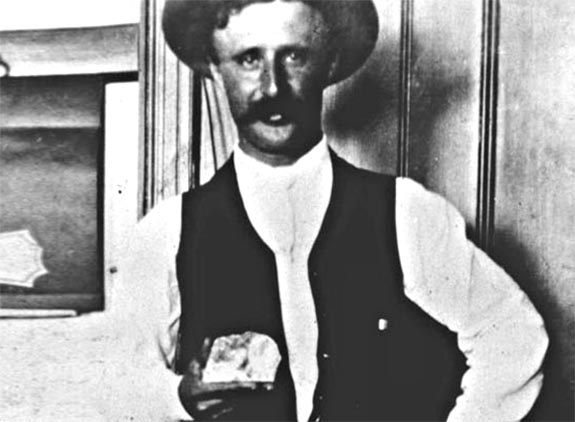Can any gem rival the 3,106-carat Cullinan Diamond?
On Jan. 26, 1905, Captain Frederick Wells was conducting a standard inspection of the Premier Mine in South Africa when a glint off the wall of the mine caught his attention. At first, he thought it was a shard of glass that may have been embedded there by a miner as a practical joke. But, then he pulled out his pocket knife and pried the object from the wall.
What he extracted was the now-famous 3,106-carat Cullinan Diamond, the largest gem-quality rough diamond ever discovered. The Cullinan weighed 621 grams (1.37 pounds) and was 98 millimeters (3.85 inches) long, 57 millimeters wide and 67 millimeters tall.
For the next 111 years, diamond miners have dreamed of another Cullinan, but none have gotten close to securing a gem of that size.
Even last year’s amazing recovery of a 1,109-carat diamond from Lucara’s Karowe mine in Botswana paled in comparison to the Cullinan. The Lesedi La Rona is barely 36 percent of the weight of the diamond standard-bearer.

On Jan. 26, 1905, Captain Frederick Wells was conducting a standard inspection of the Premier Mine in South Africa when he discovered the 3,106-carat Cullinan Diamond.
The biggest obstacle to securing enormous diamonds — intact — is the violent method mining companies use to process the diamond-bearing rock. Typically, the material has been drilled, blasted, hauled and put through crushing machines to get to the gems that may be hiding within. During that process, extremely large diamonds, some weighing hundreds of carats, are often damaged or even pulverized.
Advertisement
Lucara revealed that the 1,109-carat Lesedi La Rona actually weighed 1,483 carats, but a large chunk was a broken off during the sorting process. Lucara CEO William Lamb told Bloomberg.com at the time that it was actually fortunate that the 374-carat chunk broke off because Lucara’s plant was not designed to process such large material. A 1,500-carat diamond would have been crushed.
We recently noted that Lucapa Diamond Co. is about to go online with a new sorting machine that can recover diamonds up to 1,000 carats in size at its Lulo processing plant in Angola.
Now, Bloomberg.com is reporting that Lucara and Gem Diamonds Ltd. have their eyes on an even bigger prize.
Both are stepping up their investments in Large Diamond Recovery (LDR). The companies are installing bigger, costlier filters and laser identification technology so huge diamonds can be cherry picked before the ore goes through the crushing process. The new recovery technology will be implemented at both Lucara’s Karowe mine in Botswana and Gem Diamonds Ltd.’s Letseng mine in Lesotho.
Lucara’s recently completed plant modifications are designed to sift diamonds as large as 90 millimeters (3.5 inches) in diameter and would allow for the recovery of a gem comparable in size to the 3,106-carat Cullinan.
Howard Cohen is the Shoreham, NY-based editor of The Jeweler Blog, a daily blog ghost-written for retail jewelers. Cohen, a long-time industry veteran, is dedicated to making social media tasks simple and affordable for every jeweler. For more information, visit thejewelerblog.com or contact Cohen at 631-821-8867, hscohen60@gmail.com. Websites: thejewelerblog.com,thejewelerblog.wordpress.com
Advertisement
This article is an online extra for INSTORE Online.